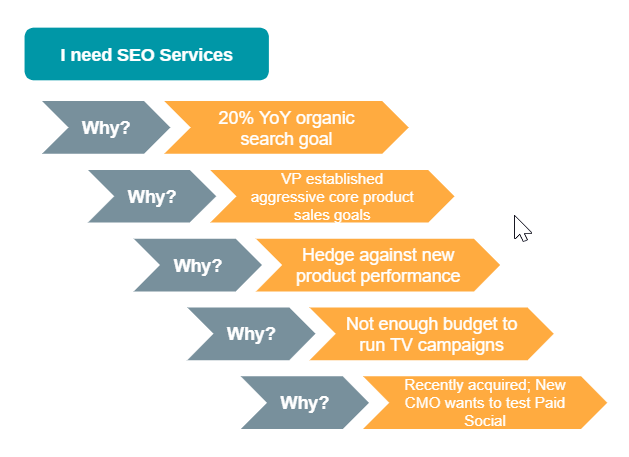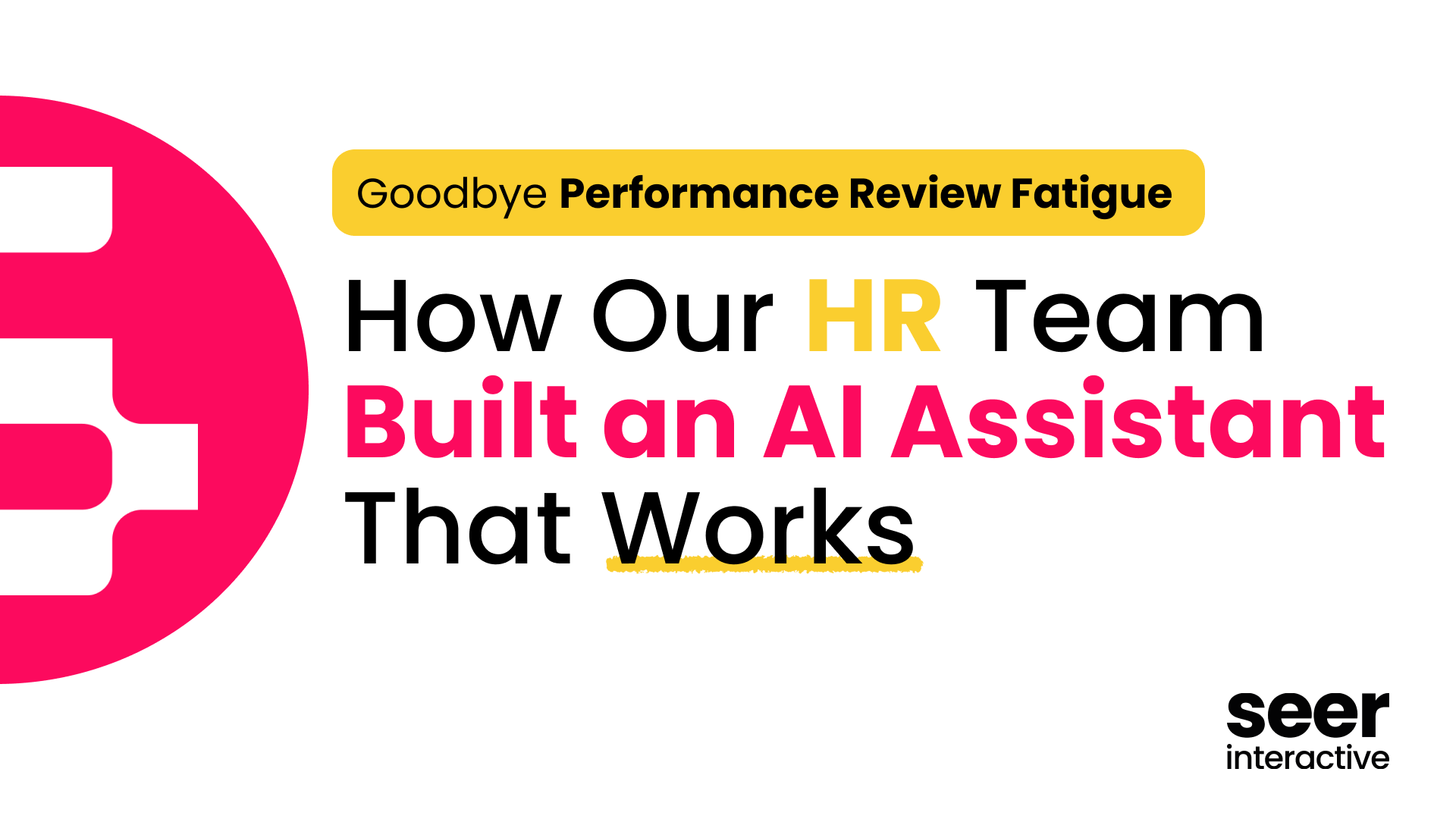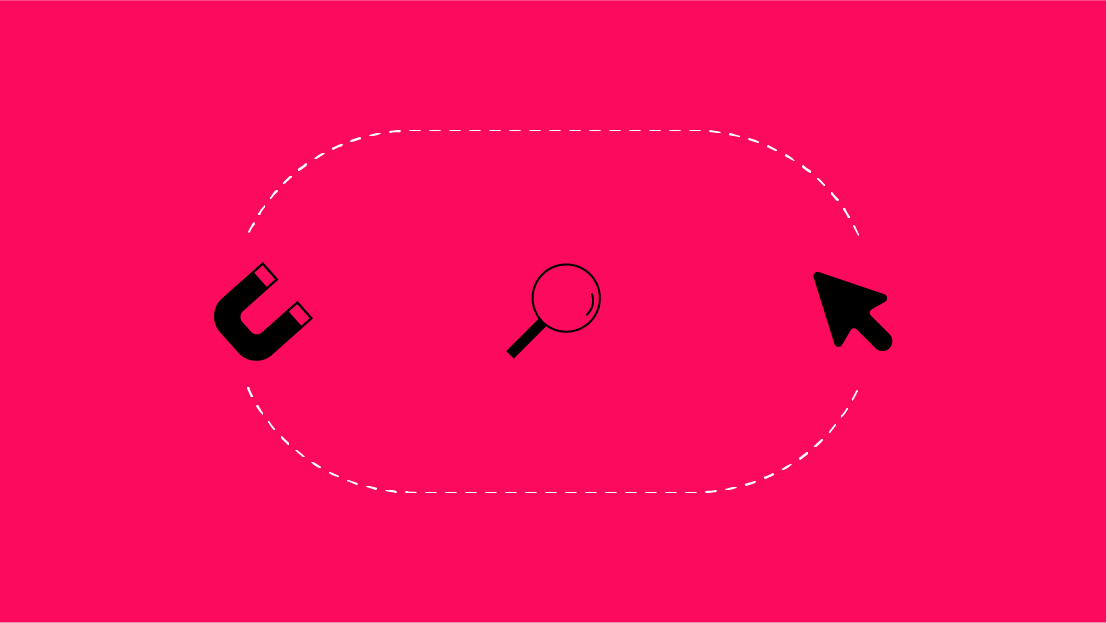Background
At Seer Interactive, we pride ourselves on being channel experts in SEO, PPC, and Paid Social -- all of which is informed by a robust Marketing Business Intelligence and Analytics practice.
It’s often why prospective clients come knocking on our door -- they are seeking an expert in a digital channel they believe will help them reach their business goals.
But what I discovered over the past few years speaking with dozens of senior client decision makers is that the biggest issues they grapple with are often not solely related to the channels they’ve engaged Seer for. In fact, often Seer’s project teams weren’t aware of those bigger client business issues until some subsequent Quarterly Business Review (or “QBR”) where “the big boss” was present to explain it.
How Was This Happening?
It was simple: sometimes junior client decision makers engaged our Business Development team looking for specific channel solutions. Folks said they needed PPC so we sold them PPC. Nothing wrong with that!
But Seer was missing an opportunity to solve a larger strategic problem for clients.
The question I’ll pose to you:
Do you know the channel solution you need to solve your strategic business challenge?
Let’s role play this for a minute:
- Client: We need a new SEO partner
- Us: Why?
- Client: Our organic traffic has declined and the SERPs are more competitive than ever. We have one internal SEO team member and an existing agency, but we need more help.
- Us: What are you looking to achieve with your SEO partner?
- Client: We need to increase our search visibility in order to drive more traffic to our website, which in turn will increase qualified leads
- Us: Why do you need to increase qualified leads?
- Client: To help achieve our 20% year-over-year increase in sales goal, and we need organic search to contribute to a significant portion of that.
- Us: Great! That's a very aggressive goal but we can definitely help. Let me explain how Seer’s SEO capability can drive value for you.
What is Their Underlying Business Challenge?
New Sales Acquisition, clearly.
But the key question is Why does the prospective client think SEO is the best way to help hit her 20% year-over-year sales goal?
Being aware that there may be a “bigger picture” at play allows us to have a much different conversation from the start.
In this post, I'm going to walk you through Seer’s point of view on the importance of starting with your business challenge in order to identify the right channel mix (and not the other way around).
Why is it Important to Start with Your Business Challenge?
All too often, we (agencies) are not asking the right questions at the start.
A prospective client is looking for a new SEO agency and our internal monologue goes, “Hey! We do that. In fact, we do that really well. Let’s get them in the door and tell them all the great things we can do for them.”
Pitch goes well, a contract is signed, and the project kicks off.
We know, of course, that the client’s goal is to increase sales by 20% so we build our SEO strategy around generating enough qualified leads to hit our share of the goal.
Year 1 goes by and we exceed our channel level KPI goals: rankings are up, organic traffic is up, and organic-driven qualified leads are up, but our client did not meet their sales goal.
Hmm, What Went Wrong?
In this scenario, the client did not invest in the right channel mix to achieve these goals.
She thought SEO was a critical part of the solution, she ran a process to find the right SEO partner, she found Seer asking for SEO, and we sold her SEO.
When we start with a strategic business challenge such as New Sales Acquisition, we can begin to diagnose the right channel mix for clients. Maybe that mix includes SEO, maybe it is just SEO, or maybe it’s something else altogether.
Now you may be wondering, how is “new sales acquisition” a strategic business challenge? Everyone wants more sales!
Yup, that’s right. But again, the question is, Why?
Asking the Five Whys
In my opinion, so much of consulting is the clever application of common sense, and in this case the use of an approach that has been around almost 100 years: the Five Whys methodology developed by Sakichi Toyoda, the founder of Toyota Motors.
The "Five Why" framework is simple, but powerful. It can help digital marketers get to the root cause of almost any challenge quickly and efficiently. Read our guide to get started with a template.
Root Cause Analysis and Lean Manufacturing
Using the same example of our client with a New Sales Acquisition problem, let’s illustrate how this might have played out if we started our conversation with the Five Whys to get at “challenge first.”

Suppose the complete stylized narrative for this client is:
“The Client was recently acquired by a private equity firm, who replaced the CMO. The new CMO was given a flat budget, but nevertheless has to support the launch of a promising new product. The CMO would be open to testing Paid Social as a more cost effective alternative to mass market TV, but the VP of marketing wants to instead hedge the revenue performance of the new product by setting more aggressive acquisition goals for the core products across all existing digital channels. The Director of Digital doesn’t believe the incumbent SEO agency can hit the revised target so she is looking at new SEO shops, including Seer Interactive.”
However, when the Director of Digital spoke with Seer’s Business Strategy team, she said she needed SEO and off we went.
But there is a much bigger potential opportunity for both the Client and Seer, right?
The 10 Core Business Challenges
Over the past two years we’ve spoken with dozens of clients -- asking them:
- What is the biggest challenge you’re trying to solve right now?
- What one thing could you do, build, or deploy, that, if you nailed it, could be a game changer for your business?
We’ve asked why five times.
Our Client Engagement team surfaced insights from the strategic accounts that they manage. We read client quarterly reports and chatted with clients over dinner. We listened to clients’ state-of-the brand presentations at QBRs and teased out strategic challenges from check-in calls with client CMOs, VPs, and Directors.
Every client we partner with has impossibly unique and nuanced business challenges, especially when you factor in data quality, organizational structure, digital maturity, the list goes on.
Over time though, we began hearing the same basic challenges over and over again.
At the end of the day, we can break it down to roughly 10 fundamental, separate, challenges:
- New Sales Acquisition
- Customer Retention
- Cross Sell / Upsell / Maximize Lifetime Value
- Improving Brand Health / Strength
- New Product or Brand Launch
- New Geo Launch
- Brand Merger or Acquisition
- New Competitive Threat
- Channel Alignment / Go-To-Market Approach
- Aggressive Goals
What are the Symptoms?
💡 Hint: most companies are grappling with more than one.
| New Sales Acquisition |
|
| Customer Retention |
|
| Cross Sell / Upsell / Maximize LTV |
|
| Improving Brand Health / Strength |
|
| New Product or Brand Launch |
|
| New Geo Launch |
|
| Brand Merger & Acquisition |
|
| New Competitive Threat |
|
| Channel Alignment / Go-To-Market Approach |
|
| Aggressive Growth Goals |
|
Like the example I covered in this article, the commonality between each of these unique challenges is starting with a data-backed analysis to inform the right channel investment.
Establishing a Solutions-Driven Framework
Using the same example of our example SEO client with a New Sales Acquisition problem, let’s illustrate how this might have played out if we used the Five Whys methodology with the list of business challenges in mind:
The Client was recently acquired by a private equity firm, who replaced the CMO. The new CMO was given a flat budget, but nevertheless has to support the launch of a promising new product. The CMO would be open to testing Paid Social as a more cost effective alternative to mass market TV, but the VP of marketing instead wants to hedge the revenue performance of the new product by setting more aggressive acquisition goals for the core products across all existing digital channels. The Director of digital doesn’t believe the incumbent SEO agency can hit the revised target so she is looking at new SEO shops, including Seer Interactive.
Here is how I might deconstruct this narrative in terms of Business Challenges:
Recent Acquisition
This can have a variety of impacts depending on the acquiring entity and the circumstance.
Was it a strategic buyer?
Was a larger player in the same space acquiring the client?
Was a company in an adjacent space buying the client to have a complete value-creation chain under one roof?
Was it a Private Equity firm buying the client with an eye to cutting cost, replacing C-level management, and positioning the client for exit in a few years?
These nuances matter as it could affect both the goals that are set and the speed by which the client expects them to be hit; for example:
- A strategic buyer may be more interested in product, technology and geographic synergies. Brand could be a major consideration. You may have the time to build a content strategy around the combined product suite, and test via PPC and Paid Social.
- A private equity buyer may need immediate revenue growth as more cash is needed to cover the debt service as the PE firm may have used significant debt financing to fund the purchase. In this case PPC could be the better (read, faster acting) lever to pull with the right ROAS.
New Product Launch
This comes with a whole slew of questions that are crucial to the development of a successful launch strategy.
What is the new product?
Where is it launching (note that a new Geography can be yet another business challenge)?
Who is the audience?
What is it’s value proposition?
What other campaigns are launching for it (Programmatic, OOH, Email, PR, etc)?
The Director of Digital asked us to focus on “core” product pages only.
Who is standing up content for the new product?
Is it a separate website or experience?
Has audience research been done?
What is the product positioning relative to the core?
Is this an opportunity for Paid Social?
Can PPC be used for testing?
What are the revenue goals?
Aggressive SEO Goals
How familiar are client executives with SEO and the role of content in a holistic digital marketing strategy?
Is SEO even the right channel in which to be doubling down?
Is there an opportunity to employ CRO techniques to harvest more yield off of existing website engagement?
Can other channel dollars be redeployed to PPC while SEO efforts are undertaken that may bear fruit with a time lag?
So, there are actually THREE distinct, but related, Business Challenges facing this client.
But knowledge about the totality of the client’s problem would allow Seer to address all three with a mix of SEO, PPC, Paid Social, and possibly CRO as part of a holistic, full-funnel strategy.
Fueled by our Marketing BI capabilities and backed by our Analytics and channel teams, this would be an exciting opportunity for Seer and the client!
Seer’s Solution Model: How It Works
It starts with a consulting approach designed to surface and identify the primary business challenges facing the client and then developing a unique solution spanning everything Seer knows how to do from SEO to Paid Social. From there we work with the client to develop goals, both strategic and tactical, to govern the success of the overall solution.
We also consider the client’s maturity with regard to tracking, attribution, data accuracy and availability, as well as the client’s ability to implement website content changes promptly.
On a preliminary basis, and ongoing, we conduct Marketing BI leveraging our proprietary tools to combine paid and organic data (along with site crawl data, Google Search Console data and more) to identify specific search opportunities insights.
We then translate those insights into actionable channel-specific strategies, execute, and then measure our success as part of an internal feedback mechanism to confirm our tactical approach and progress to strategic goals.
The basic approach we like to take looks like this:
Going back again to our hypothetical client that initially came to Seer seeking SEO services...
Solution Identification & Goals:
Client’s stated issue to address: “We have a sales acquisition problem. Our goal is to increase sales by 20% this year.”
Seer assessed Business Challenges:
- Recent Acquisition
- New Product Launch
- Aggressive Sales Goals
Data, Analytics & Maturity Determination:
We work with the client to determine what data they have that allows them to understand digital marketing’s impact on sales goals.
In this case suppose the client has the ability to implement changes to the website, stand up paid landing pages, etc., directly. This isn’t always the case!
Data Analysis:
In order to make informed channel decisions, we may recommend a full customer journey audience analysis to understand how the client gets qualified leads that turn into a sale, top to bottom.
Following a preliminary assessment, we may recommend analyzing the organic search results for 500,000 keywords where the client is currently showing paid ads. We may also build a custom, client-specific Click Through Rate Curve using the clients on Google Search Console Data.
This may take up to the first 2-3 months of a typical engagement.
Channel Strategy Formulation:
The output of our customer journey analysis and Marketing BI efforts is now our channel strategy roadmap for the year. What we may learn is:
- This client needs a robust top-of-funnel content strategy to attract new customers
- In the meantime, they should increase investments in paid social and display to reach lookalike audiences; the client can leverage paid social and display to help build awareness for the new product, drafting off of creative from the accompanying PR, print and email campaigns deployed by the AOR
- The client has high CPAs in Paid Search so they should focus on optimizing landing pages for high-converting search terms and pausing inefficient campaigns
- They need to deploy a remarketing and email strategy between when a lead is submitted and a sale occurs to improve the their sales conversion rate
- The client should test CTAs and ad copy for the new product, and feed results into a content strategy for the new section of the website
- The client should consider a CRO effort to maximize yield for core products
- The client should build new content and creative assets, coupled with an engagement measurement and remarketing plan, to be more competitive in mid-funnel searches.
Performance Analytics & Measurement:
With a robust performance measurement regime in place we can ask our client the following questions:
- How are our channel recommendations performing to goal?
- Where do we need to pivot for the next quarter?
- What is the right mix of spend across these channels?
- How do we attract more of the customers we want and not show ads to the ones that aren’t likely to convert?
- How do we detect anomalies and deviations from normative performance expectations automatically?
- How do we build a business case for greater investment into channels and strategies that are driving outsized value?
Pulling It All Together
This looks a lot different than looking at SEO in a silo to help a sales problem! But this is not just a glorified exercise of upselling. The client may have come to Seer seeking SEO and may well engage Seer just for SEO -- perhaps the client is already working with another agency for PPC and Paid Social. Maybe the client has an internal analytics team that would be a fantastic partner for us in the project.
The difference between Seer yesterday and Seer today, is that we’ll be asking the client a whole host of new questions and leading the client through the business challenges consulting methodology all the same. And, in so doing, establish expectations for the level of data access and engagement we will require of the client’s other agency partners and internal teams.
What’s Next?
Would a part 2 of this post breaking down each of the 10 business challenges help you develop your own data-driven, cross-channel roadmap? Let us know in the comments below.
If you have a business challenge you’re looking to solve, reach out to us!
Sign up for our newsletter for more posts like this - delivered straight to your inbox!



